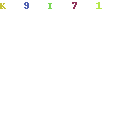If the city was responsible for 60% of Maharashtra’s tally of 232 cases on April 15 and rose to account for 68% on May 18, data on June 27 (Saturday) morning showed Mumbai had contributed 25% to the total Maharashtra tally for the previous 24 hours.
The Covid load is now growing quickly in Greater Mumbai’s satellite cities and Maharashtra’s other big cities such as Pune, Nashik, Aurangabad and Jalgaon. While the impact of the lockdown is showing on Mumbai, the exodus of migrants has put the onus now on the tier-2 cities.
“There has been a significant change in how Covid is affecting various districts in Maharashtra,’’ said an official. “Initially, it was 70% Mumbai, 20% Pune and 10% rest of Maharashtra,” he said. The decline in Mumbai’s share began in late May; but its satellite cities began paying the price for sharing a porous border with the capital.
State monitors Covid-19 situation in Jalgaon, Aurangabad, Solapur
On May 4, when lockdown 3.0 began, Mumbai threw up 441 (65%) cases to Maharashtra’s daily tally of 678 cases. Its satellite towns – from Navi Mumbai to Thane to Palghar – had barely 70 cases that day.
When the latest lockdown began on June 3, Maharashtra’s daily tally of 2,287 cases had 1,117 cases from Mumbai (49%) and 559 cases (24%) from the satellite towns. However, the scene was different on June 27 morning, when Maharashtra’s daily tally of 5,024 cases had only 1,297 cases (25%) from Mumbai.
The state is now keeping a close watch on Covid cases in Jalgaon, Aurangabad, Solapur and Nashik. “The rise of cases in Mumbai’s satellite towns and rest of Mumbai coincide with the government’s decision to allow inter-district travel from May second week onwards,’’ said another state official.
There were single-digit cases recorded in almost 20 districts and municipal corporations on May 9, the day when the first train was started from Mumbai to Basti in Uttar Pradesh, during the lockdown. Following this, the state has also allowed inter-district movement by state transport buses and private vehicles maintaining social distance norms.
“One of the key reasons for increase in number of cases in rural Maharashtra is the migration from cities to rural parts—mainly from Mumbai or Pune to other districts. The drastic trend of increasing number of cases in rural areas coincides with the incubation period of 14 days post-migration,” said the official.
He added that since March until May second week, not a single case was registered in Gadchiroli and Wardha districts whereas only 1 each was recorded in Chandrapur, Gondia, Buldhana, Washim and Beed. On Friday, Aurangabad recorded 4,354 cases while on May 9 there were 437 cases, almost 10 times in one and half month. Nashik had 3,433 cases on Friday which had only 73 on May 9.
Source: https://timesofindia.indiatimes.com/city/mumbai/mumbais-share-in-states-daily-covid-caseload-slides-from-68-to-25/articleshow/76668409.cms


